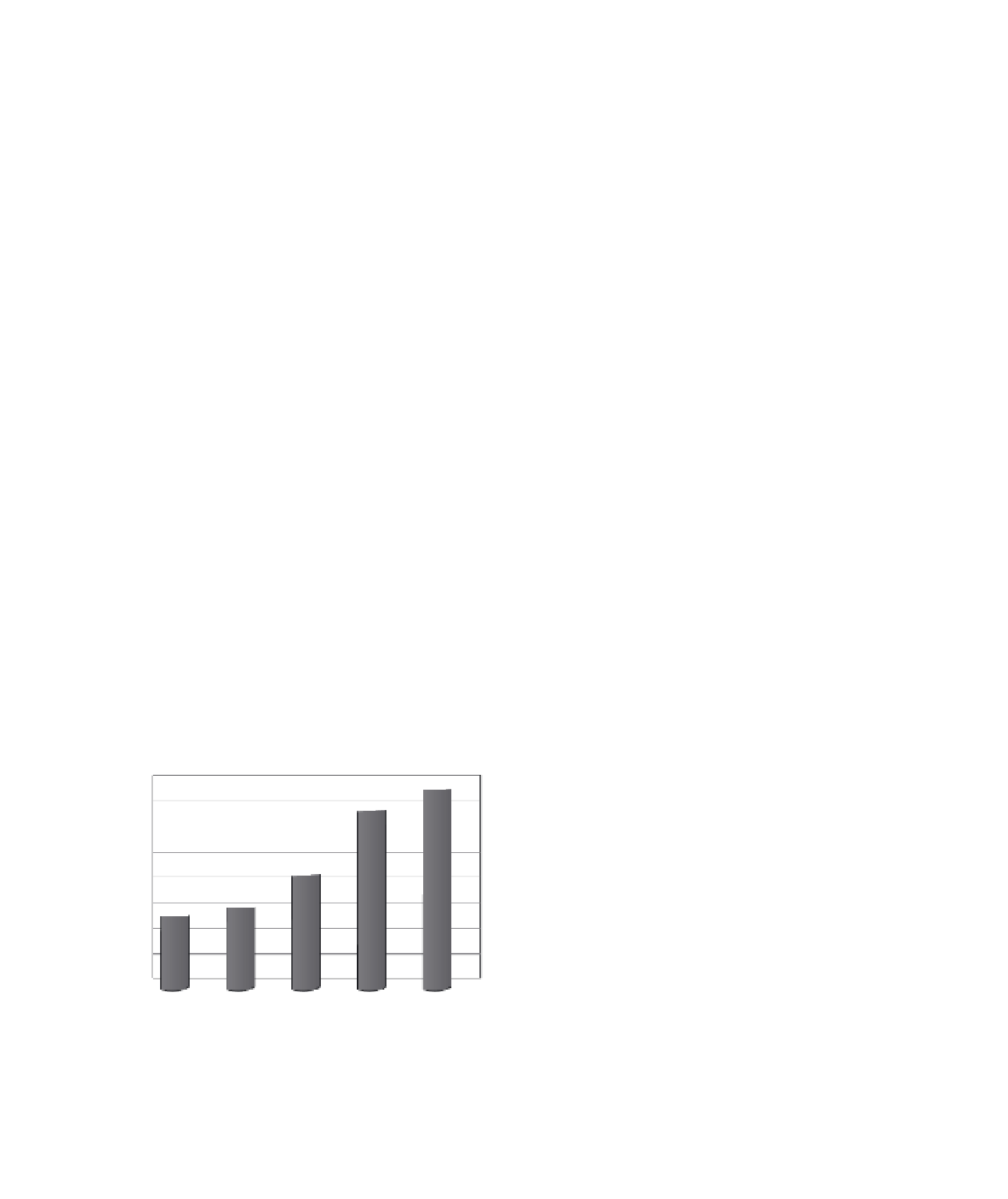Agriculture Reference
In-Depth Information
POSTHARVEST PHYSIOLOGY AND
STORAGE
Table 23.3.
Avocado utilization in the United
States.
Type of Food/Recipe
% With avocados
Postharvest losses: causes and remedies
Postharvest diseases of avocado are a major problem in
produce storage and significantly affect the cost of avocado
production and commercialization. Pests have a negative
economic impact on the avocado producers as they dam-
age the branches, trunk, leaves, and fruit. Pests are also a
cause for quarantine restrictions when the fruit is exported
(Dorantes- Alvarez et al., 2004). Some authors reported dif-
ferent numbers of pest species of relevance for avocado
crops, however, only a few pest species are economically
important for these crops, except in areas with poor han-
dling, lack of problem diagnosis, and inadequate supply of
labor and packaging supplies.
Avila-Quezada et al. (2002) studied the avocado damage
by thrips. The diseases and damage of thrips were stud-
ied in a 'Hass' avocado grove in Michoacan, Mexico, in
60 fruits of the lower part of 60 trees. Rates of apparent
disease infection and damage by thrips were calculated by
Weibull model. Anthracnose appeared in the last pheno-
logical stages of the fruit and progressed through the last
date of the assessment. The greater the rate of incidence of
thrips and damage in young avocado fruits, the greater the
increase of scab severity; as fruits ripen, scab and damage
by thrips stopped.
Thrips (
Liothrips persea
Watson) are insects that have
a strong presence in tropical and subtropical zones, and
their damage is reduced in the avocado cultivars grown
at an altitude of 1,900-2,400 m (6,330-8,000 ft). To re-
duce thrips, it is useful to eliminate weeds and to keep the
orchard clean. This is a pest easily controlled by chemical
pesticides such as Malathion and Parathion.
Colletotrichum
gloeosporioides
Penz causes anthracnose. The disease at-
tacks different parts of the plant; when located in the leaves
it is also known as stippling and causes distortion and dis-
coloration. Thrips and other types of pests and damage
have been described by Avalos (2008), for example, avo-
cado blight, avocado root-rot, small seed weevil, seed moth,
red or brown mites, and white fly. These diseases are well
known to avocado producers and agronomical pathologists;
recently, a new pest,
Bombacoccus aguacatae
Kondo, was
found to be present in Colombia, South America (Kondo,
2010).
The following considerations, as reported by Dorantes-
Alvarez et al. (2004), may help in preventing the contam-
ination with pathogens during harvesting: (1) avoid me-
chanical damage that could lower the commercial value,
Salad
39
Avocado-base cuisine
25
Cold sandwich
9
Dips/guacamole
7
Mexican cuisine
7
Hot sandwich
5
Variety cuisine
2
Seafood
1
Bread
1
Eggs
1
Beef
1
Tortilla
1
Soup
1
Source: (MGA, 2008).
States (see Table 23.3) are as salad ingredients (39%) and
side dishes (25%). The per capita consumption of avocado
in the United States was 3.9 lbs/year in 2008, which was
176.6% higher than 1.4 lbs/year in 1990 (Fig. 23.3). An
extraordinary characteristic of avocado is the reduction of
bad cholesterol (low-density lipoproteins) and the risk of
atherosclerosis, which are considered additional benefits to
human health (Alvizouri and Rodrıguez, 2009). Avocado
has also been used as an alternative to help in the treatment
of osteoarthritis (Ernst, 2003).
4.0
3.5
3.0
2.5
2.0
1.5
1.0
0.5
0.0
1990
1995
2000
2005
2008
Figure 23.3.
Per capita consumption avocado in the
United States for selected years (source: Adapted
from USDA-ERS, 2010).






Search WWH ::

Custom Search